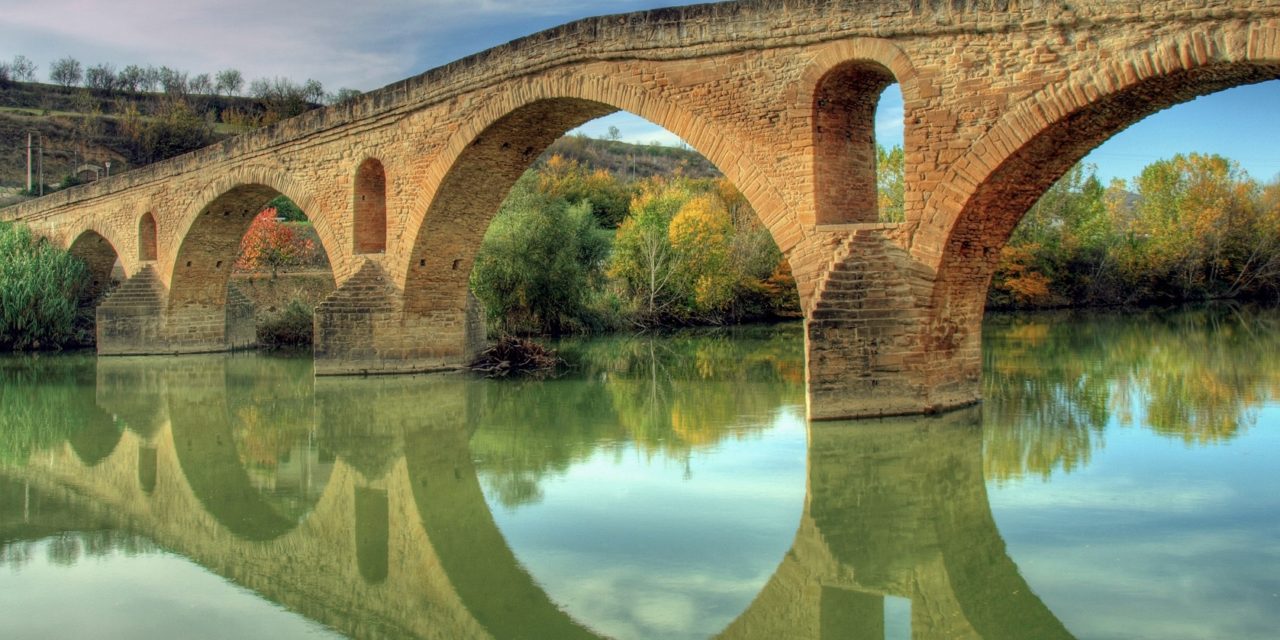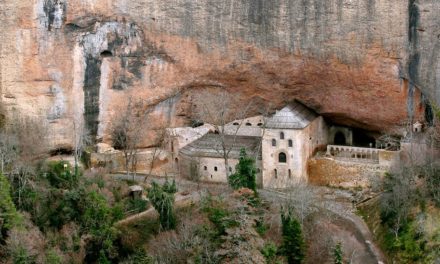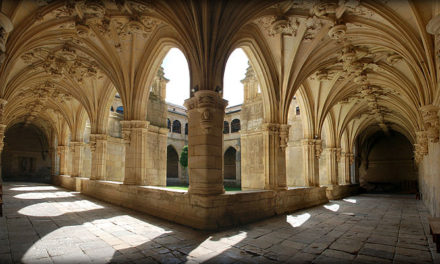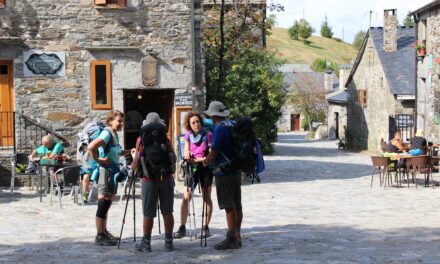Puente la Reina is for pilgrims the meeting point of different roads, the Aragonese and Navarrese branches of the French Way in Spain and, as indicated by the Codex Calixtino , of the four great pilgrimage routes that cross France: “one goes by Saint-Gilles, Montpellier, Toulouse and Somport; another passes through Santa María del Puy, Santa Fe de Conques and San Pedro de Moissac; a third goes there by Santa Magdalena de Vézelay, by San Leonardo de Limoges and by the city of Périgueux; the last one goes through San Martin de Tours, San Hilario de Poitiers, San Juan d’Angély, San Eutropio de Saintes and Bordeaux “.
The pilgrims come to this medieval town walking past the monument to the Pilgrim, and then continuing their journey among its many monuments: churches, convents, cruises, noble houses … and, above all, over its imposing bridge over the river Arga.
According to tradition, the name of the town, Puente la Reina, comes from this famous Romanesque bridge, for many the most beautiful and balanced of the French Way. The bridge would have been built in the 12th century for a Queen of Navarre, maybe Doña Mayor wife of Sancho el Mayor , although most historians believe the Queen to have been Doña Estefanía wife of García el de Nájera. It is a structure with six semicircular arches with a pointed profile that originally also had a central tower that no longer exists today. This bridge would have facilitated the passage of pilgrims and merchants through the town, while contributing at the same time to its growth and importance.
Like many medieval Camino towns, Puente la Reina is organized longitudinally, following the route of the Camino, which has led to its having long main street around which most of its monuments are located. Among the buildings in the town, many attest to the presence of the Knight Templars in the town, like the convent of the Reparadoras, an old templar hospital. Mention must also be made of the Church of the Crucifix, linked to the aforementioned convent by a vaulted arch. In this church two naves remain, one being Romanesque and the other being ogival, where an interesting Rhine Crucifix of the fourteenth century has been preserved.
While still following the main street, the pilgrim can visit the church of Santiago, which retains a Romanesque portal, dating from the twelfth century. Most of its architecture, however, dates from the sixteenth century and its altarpieces are from the baroque period. Also in this church a sculpture of special value is kept. This is the Santiago el Beltza, for some the best known Santiago pilgrim of the entire Camino de Santiago, with its superlative high gothic carving. Finally, very close to the bridge the pilgrim can find the church of San Pedro, which was originally of Gothic origin but has undergone many changes over the centuries.
Photo: We have taken this image of the Commons Wikipedia project, its author is Javier Montes.











